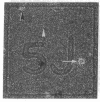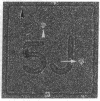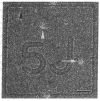Abstract
To determine whether pancreatic B cells show a constant secretion pattern during repeated stimulations, we have used a sequential hemolytic plaque assay to monitor their individual insulin release during several successive 30-min incubations in the presence of 16.7 mM glucose. We have found that the total B cell secretion did not vary significantly in these successive glucose stimulations and that, under these conditions, the majority of B cells that were stimulated to release insulin during the first incubation also secreted during the second, third, and, when this was tested, during the fourth incubation. Similarly, most of the B cells that did not release detectable amounts of insulin during the first incubation did not secrete also during the two (or three) subsequent secretion tests. Together, the two groups of B cells that showed a constant secretory pattern, represented approximately 75% of the entire B cell population. The remaining 25% of B cells shifted from a secreting to a non-secreting state, or vice versa, from one incubation to another. These observations were made under three different time frames in which we tested single B cells as well as B cell clusters at rather different intervals. These findings support the existence of distinct B cell subpopulations differing lastingly in their ability to secrete insulin in response to glucose.
Full text
PDF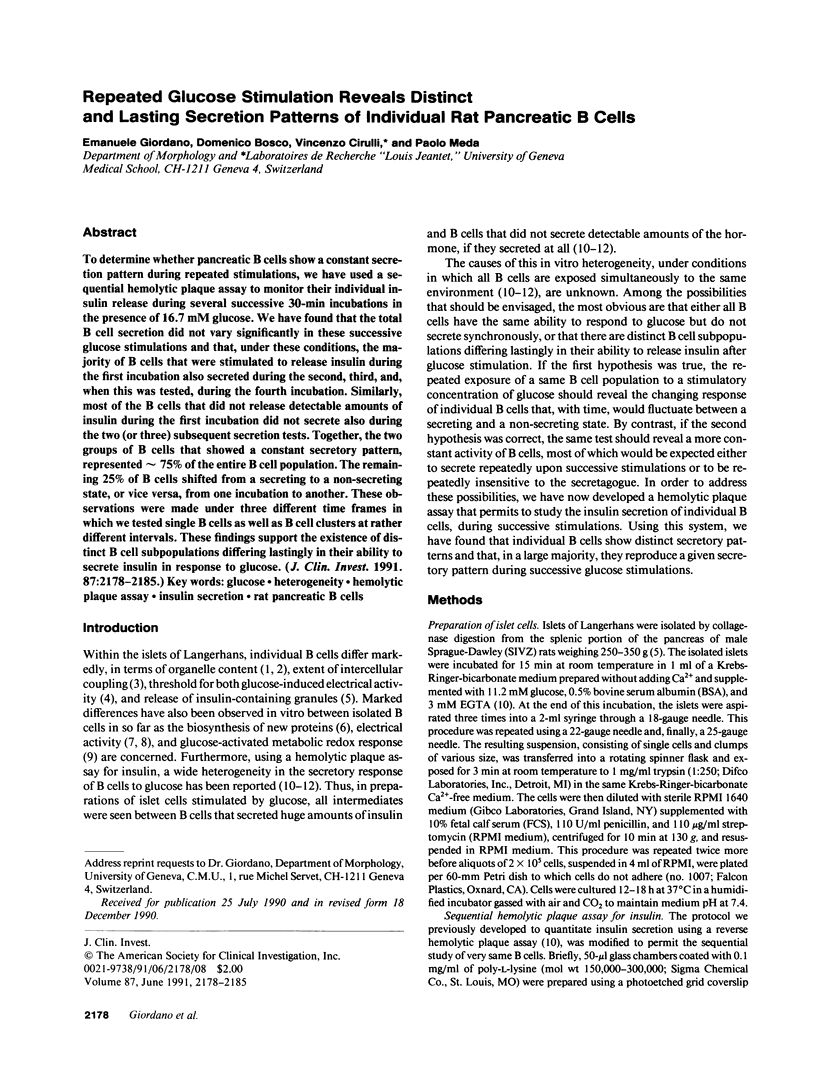
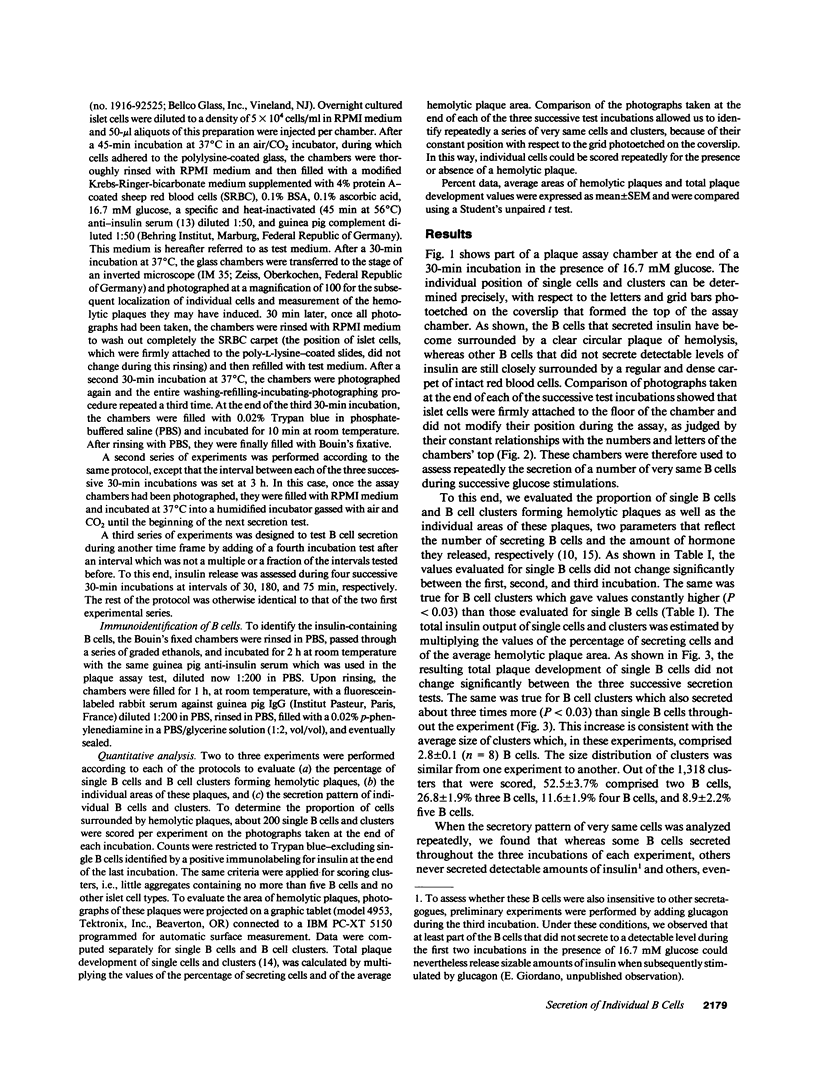
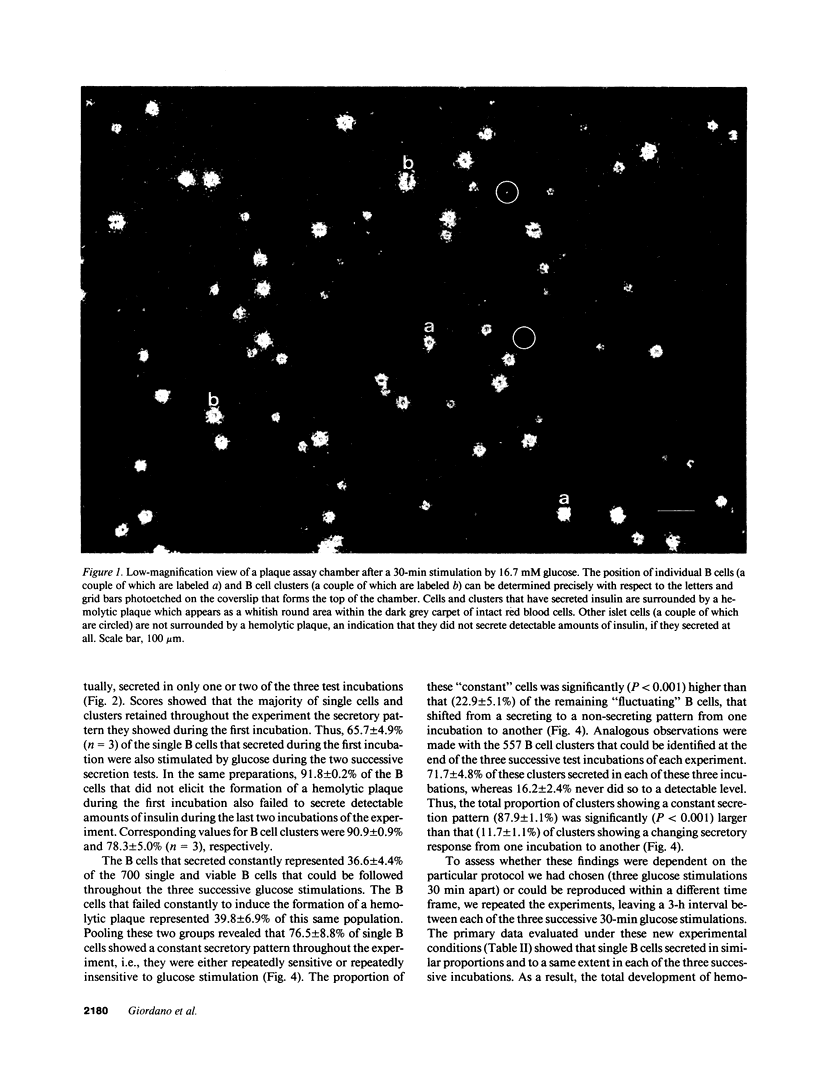
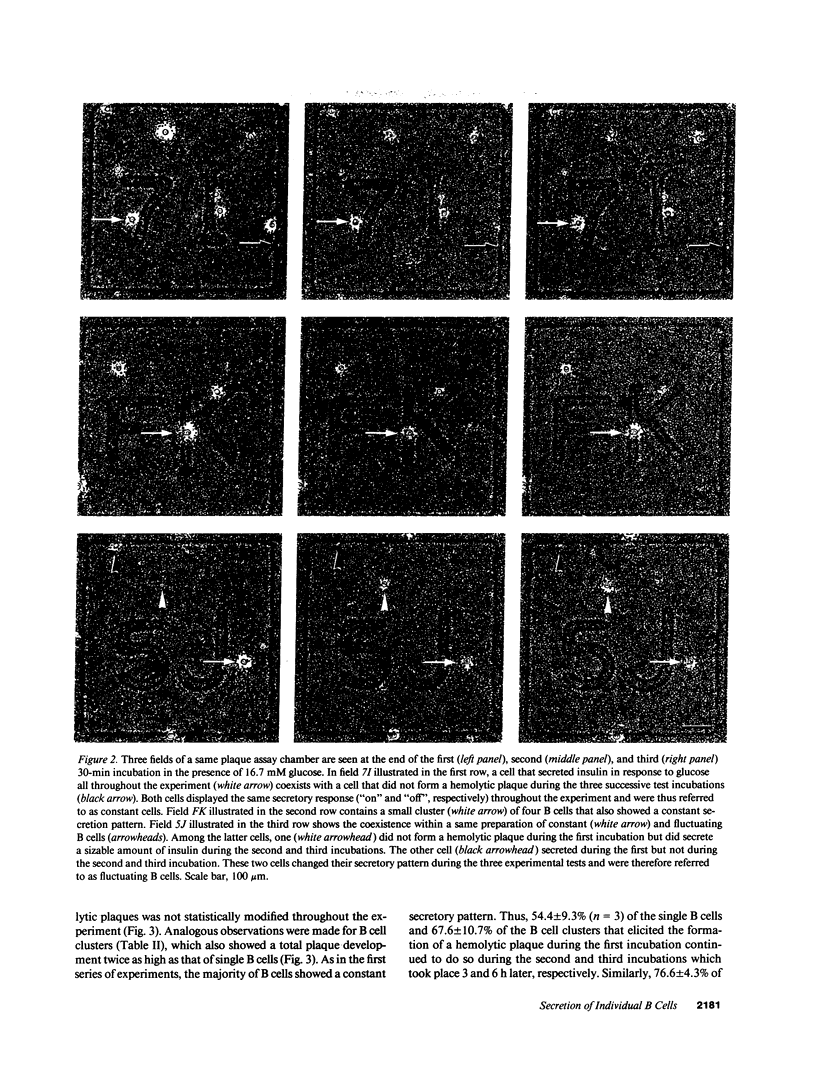
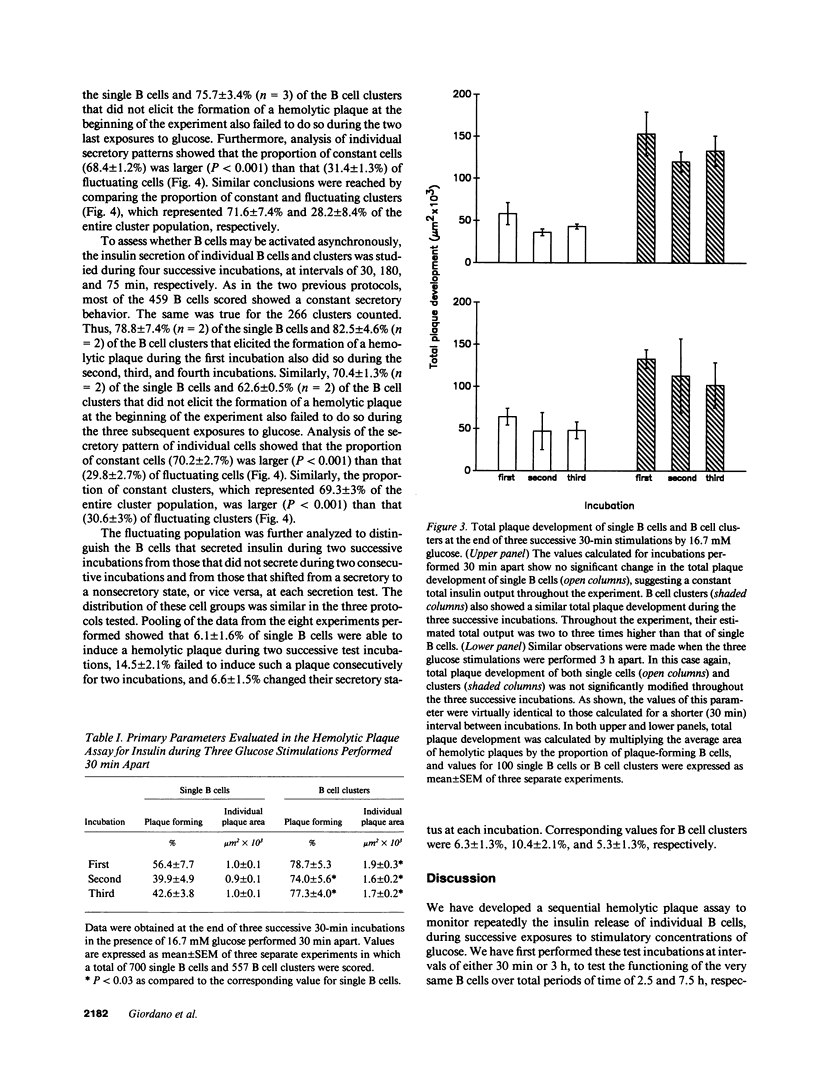
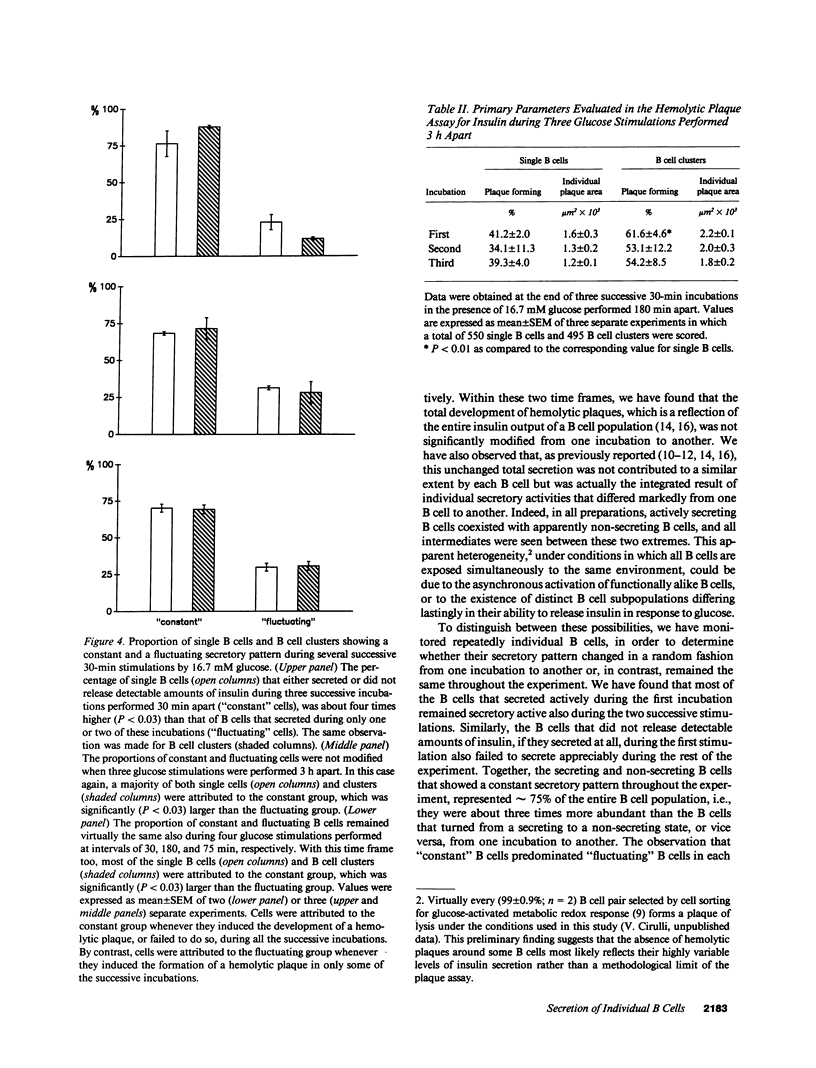
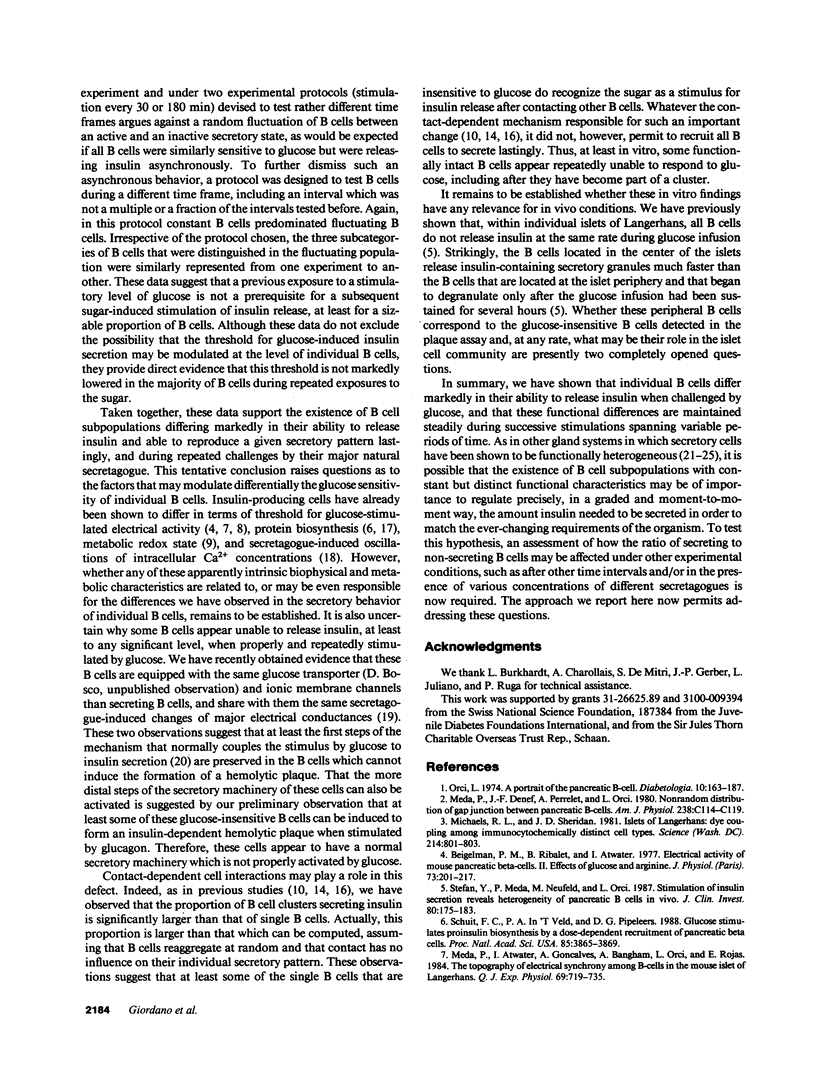
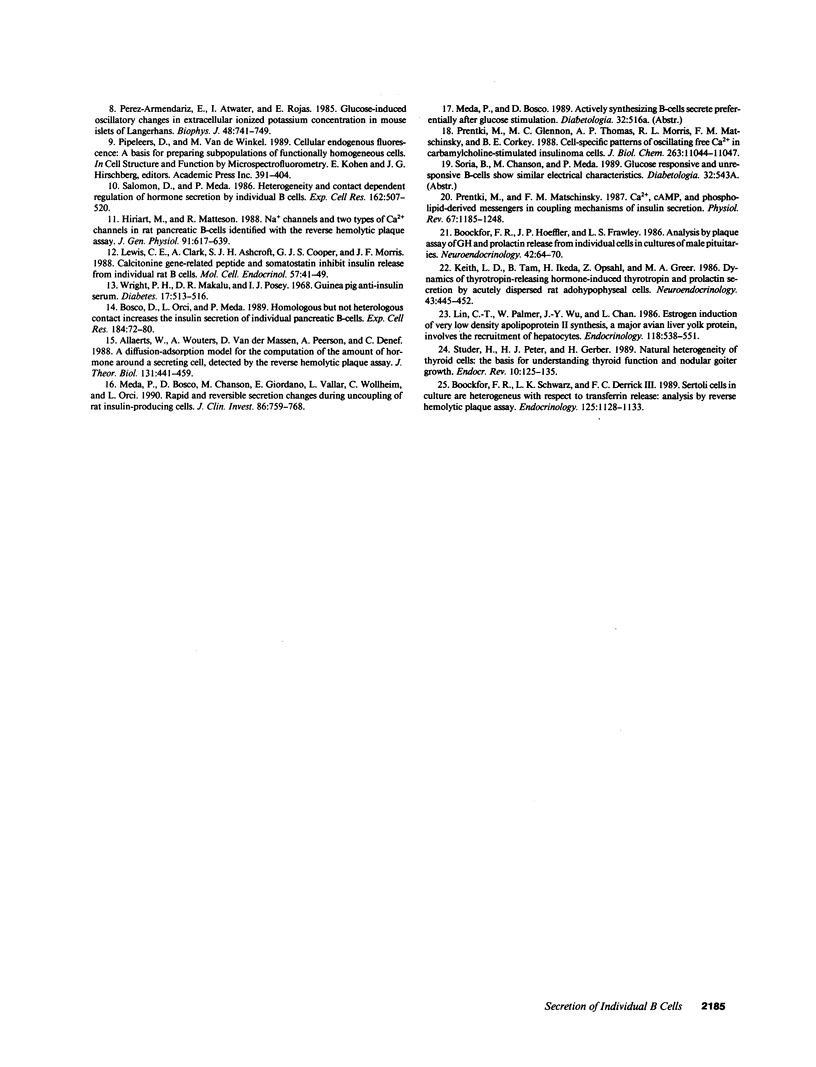
Images in this article
Selected References
These references are in PubMed. This may not be the complete list of references from this article.
- Allaerts W., Wouters A., Van der Massen D., Persoons A., Denef C. A diffusion-adsorption model for the computation of the amount of hormone around a secreting cell, detected by the reverse hemolytic plaque assay. J Theor Biol. 1988 Apr 21;131(4):441–459. doi: 10.1016/s0022-5193(88)80040-7. [DOI] [PubMed] [Google Scholar]
- Beigelman P. M., Ribalet B., Atwater I. Electric activity of mouse pancreatic beta-cells. II. Effects of glucose and arginine. J Physiol (Paris) 1977 Jul;73(2):201–217. [PubMed] [Google Scholar]
- Boockfor F. R., Hoeffler J. P., Frawley L. S. Analysis by plaque assays of GH and prolactin release from individual cells in cultures of male pituitaries. Evidence for functional heterogeneity within rat mammotrope and somatotrope populations. Neuroendocrinology. 1986;42(1):64–70. doi: 10.1159/000124250. [DOI] [PubMed] [Google Scholar]
- Boockfor F. R., Schwarz L. K., Derrick F. C., 3rd Sertoli cells in culture are heterogeneous with respect to transferrin release: analysis by reverse hemolytic plaque assay. Endocrinology. 1989 Sep;125(3):1128–1133. doi: 10.1210/endo-125-3-1128. [DOI] [PubMed] [Google Scholar]
- Bosco D., Orci L., Meda P. Homologous but not heterologous contact increases the insulin secretion of individual pancreatic B-cells. Exp Cell Res. 1989 Sep;184(1):72–80. doi: 10.1016/0014-4827(89)90365-0. [DOI] [PubMed] [Google Scholar]
- Hiriart M., Matteson D. R. Na channels and two types of Ca channels in rat pancreatic B cells identified with the reverse hemolytic plaque assay. J Gen Physiol. 1988 May;91(5):617–639. doi: 10.1085/jgp.91.5.617. [DOI] [PMC free article] [PubMed] [Google Scholar]
- Keith L. D., Tam B., Ikeda H., Opsahl Z., Greer M. A. Dynamics of thyrotropin-releasing hormone-induced thyrotropin and prolactin secretion by acutely dispersed rat adenohypophyseal cells. Evidence for 'all-or-none' secretion by heterogeneous secretory units, each with a specific response threshold. Neuroendocrinology. 1986;43(4):445–452. doi: 10.1159/000124565. [DOI] [PubMed] [Google Scholar]
- Lewis C. E., Clark A., Ashcroft S. J., Cooper G. J., Morris J. F. Calcitonin gene-related peptide and somatostatin inhibit insulin release from individual rat B cells. Mol Cell Endocrinol. 1988 May;57(1-2):41–49. doi: 10.1016/0303-7207(88)90030-5. [DOI] [PubMed] [Google Scholar]
- Lin C. T., Palmer W., Wu J. Y., Chan L. Estrogen induction of very low density apolipoprotein II synthesis, a major avian liver yolk protein, involves the recruitment of hepatocytes. Endocrinology. 1986 Feb;118(2):538–544. doi: 10.1210/endo-118-2-538. [DOI] [PubMed] [Google Scholar]
- Meda P., Atwater I., Gonçalves A., Bangham A., Orci L., Rojas E. The topography of electrical synchrony among beta-cells in the mouse islet of Langerhans. Q J Exp Physiol. 1984 Oct;69(4):719–735. [PubMed] [Google Scholar]
- Meda P., Bosco D., Chanson M., Giordano E., Vallar L., Wollheim C., Orci L. Rapid and reversible secretion changes during uncoupling of rat insulin-producing cells. J Clin Invest. 1990 Sep;86(3):759–768. doi: 10.1172/JCI114772. [DOI] [PMC free article] [PubMed] [Google Scholar]
- Michaels R. L., Sheridan J. D. Islets of Langerhans: dye coupling among immunocytochemically distinct cell types. Science. 1981 Nov 13;214(4522):801–803. doi: 10.1126/science.6117129. [DOI] [PubMed] [Google Scholar]
- Orci L. A portrait of the pancreatic B-cell. The Minkowski Award Lecture delivered on July 19, 1973, during the 8th Congress of the International Diabetes Federation, held in Brussels, Belgium. Diabetologia. 1974 Jun;10(3):163–187. doi: 10.1007/BF00423031. [DOI] [PubMed] [Google Scholar]
- Perez-Armendariz E., Atwater I., Rojas E. Glucose-induced oscillatory changes in extracellular ionized potassium concentration in mouse islets of Langerhans. Biophys J. 1985 Nov;48(5):741–749. doi: 10.1016/S0006-3495(85)83832-7. [DOI] [PMC free article] [PubMed] [Google Scholar]
- Prentki M., Glennon M. C., Thomas A. P., Morris R. L., Matschinsky F. M., Corkey B. E. Cell-specific patterns of oscillating free Ca2+ in carbamylcholine-stimulated insulinoma cells. J Biol Chem. 1988 Aug 15;263(23):11044–11047. [PubMed] [Google Scholar]
- Prentki M., Matschinsky F. M. Ca2+, cAMP, and phospholipid-derived messengers in coupling mechanisms of insulin secretion. Physiol Rev. 1987 Oct;67(4):1185–1248. doi: 10.1152/physrev.1987.67.4.1185. [DOI] [PubMed] [Google Scholar]
- Salomon D., Meda P. Heterogeneity and contact-dependent regulation of hormone secretion by individual B cells. Exp Cell Res. 1986 Feb;162(2):507–520. doi: 10.1016/0014-4827(86)90354-x. [DOI] [PubMed] [Google Scholar]
- Schuit F. C., In't Veld P. A., Pipeleers D. G. Glucose stimulates proinsulin biosynthesis by a dose-dependent recruitment of pancreatic beta cells. Proc Natl Acad Sci U S A. 1988 Jun;85(11):3865–3869. doi: 10.1073/pnas.85.11.3865. [DOI] [PMC free article] [PubMed] [Google Scholar]
- Stefan Y., Meda P., Neufeld M., Orci L. Stimulation of insulin secretion reveals heterogeneity of pancreatic B cells in vivo. J Clin Invest. 1987 Jul;80(1):175–183. doi: 10.1172/JCI113045. [DOI] [PMC free article] [PubMed] [Google Scholar]
- Studer H., Peter H. J., Gerber H. Natural heterogeneity of thyroid cells: the basis for understanding thyroid function and nodular goiter growth. Endocr Rev. 1989 May;10(2):125–135. doi: 10.1210/edrv-10-2-125. [DOI] [PubMed] [Google Scholar]
- Wright P. H., Makulu D. R., Posey I. J. Guinea pig anti-insulin serum. Adjuvant effect of H. pertussis vaccine. Diabetes. 1968 Aug;17(8):513–516. doi: 10.2337/diab.17.8.513. [DOI] [PubMed] [Google Scholar]










